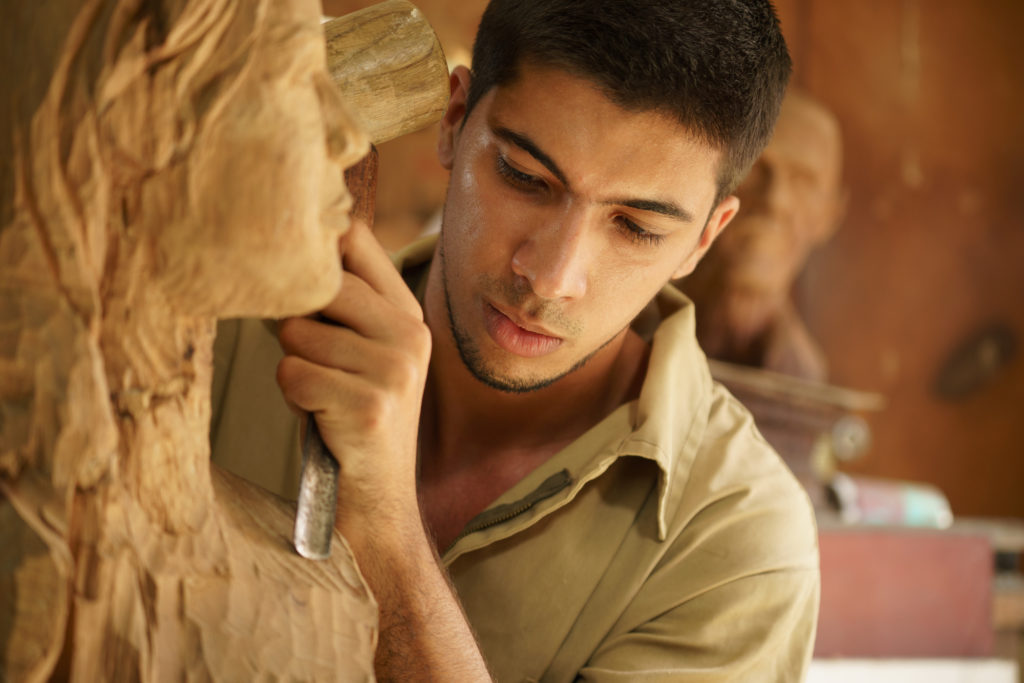
When you’re first starting out with any art for the first time, you can be frustrated when you don’t pick it up right away. It’s a natural reaction, but this doesn’t mean that you should give up. Sculpting can be a rewarding and unique way to express yourself.
To give you a little hand, here are 10 tips that beginner sculptors should be familiar with.
1. Set Up The Appropriate Workspace
Setting up the right workspace is essential for many artists. There is something about having a place that is designated for your work. It puts you in the right headspace.
The creative process also tends to go a lot faster when you can actually locate all of your tools so make sure you keep your area clean. It’s essential that you aren’t hunched while you work so make sure your desk is the appropriate height for you.
We recommend getting a table with an adjustable height option. Your desk should also be wide enough that there is enough room for all of your supplies. This doesn’t mean having all your supplies squeezed on the desk. They should fit comfortably while still giving you enough room to work.
A comfortable chair can’t hurt things either. Remember, you will be sitting for several hours at a time. You might not be able to concentrate if you’re constantly shifting to get comfortable. You could also consider a standing desk.
2. Envision The Final Product
Before you start it is important that you close your eyes and envision how you want the final product to look.
Once you have a good idea in your head for where this piece is going to go, make sketches. These sketches should consist of drawing of how you want to figure to look at all angles.
Consider things like the dimensions, main shapes, and ratios between lengths. This is much like having a blueprint of work work, just like an architect.
3. Use Various References
To get to know the human and animal anatomy, you should study it. Study skeletons, muscles, clothed, and naked anatomy. Once you can sketch all of this, you will be able to understand it to sculpt it that much more.
Scale models are really great because you can adjust them in your hands. Look at them in several different forms of lighting.
This doesn’t have to stop with just humans and animals. You can go to the beach and pick up a smooth rock or shell. Study the surface, take in the textures. This will help you sculpt them.
4. Use A Template When Making An Armature
One of the best ways to have an armature is to have a drawing or printed template on paper.
You can lay the armature on the paper to make sure the wire is within the confines of the object you’re sculpting. Doing this will help you see if your size is going to be off or not.
These silhouettes are available online if you’re against making your own. If your issue is that you don’t have a computer so you can’t print out images, you can draw it freehand. If freehand isn’t your forte you can always trace over an image.
5. Anatomy Is Done In Stages
A common mistake beginning sculptors make is trying to rush into the anatomy. You want to get to all of the details really quickly because it’s fun, it’s the best part. If you do this though, you might find your forms aren’t fitting right.
You have to block the primary shapes before you get to the good part. It might not be as thrilling but it’s fundamental.
6. Consider Poses Carefully
When you’re posing a clay sculpture, it’s important that it works from all angles. The character needs to look balanced, and the composition needs to be concise from all angles as well.
Something you might find useful is taking pictures of your sculpture from all sides. When you’re looking at in a photograph it might be easier to find mistakes in the pose.
7. Check Proportions As You Go Along
By gradually adding on pieces of clay you can easily shape and add on as your reference allows.
It’s helpful to add in imaginary lines to help you get a feel for the proportions. If you don’t have the best imagination, then you can take a picture and physically add the lines o
8. Mirrors Are Helpful Tools
A mirror is a great tool for sculptors. You can use it to study your own face and expressions for a reference. You can also use it to find irregularities in your sculpture.
Turn it so it faces the mirror and you will notice a lot of things that you didn’t notice beforehand. It’s actually important to do this every once in a while. This is so you can spot inconsistencies right away and not have to backtrack or destroy anything you’ve already done.
9. Use Creative Problem Solving
Sometimes you’ll run into issues like, not being able to accurately sculpt something because it’s hard to get to the anatomy part in question to sculpt it.
For this, you will have to find creative ways to prop it up without bringing harm to your creation. Don’t be afraid to try anything.
10. Experiment With Stamps
The fun thing about this is that anything can be a stamp. A stamp is simply anything you can press onto the surface of your statue to create an effect.
Take a long look around the house. I bet you’ll be able to find anything that you can use as a stamp. It can create a great textured look when you do it right.
For tips on how to make realistic sculptures, go here to read more.
Tips For Beginner Sculptors
There are many hardships that beginner sculptors may face when they’re first starting out. Don’t let this discourage you. Take these tips to heart and pick up the clay and get to work. The only limitation is yourself.
If you’re thinking of quitting your job and take up the life of a freelance sculptor, here are a few things that you might want to know before you do.

